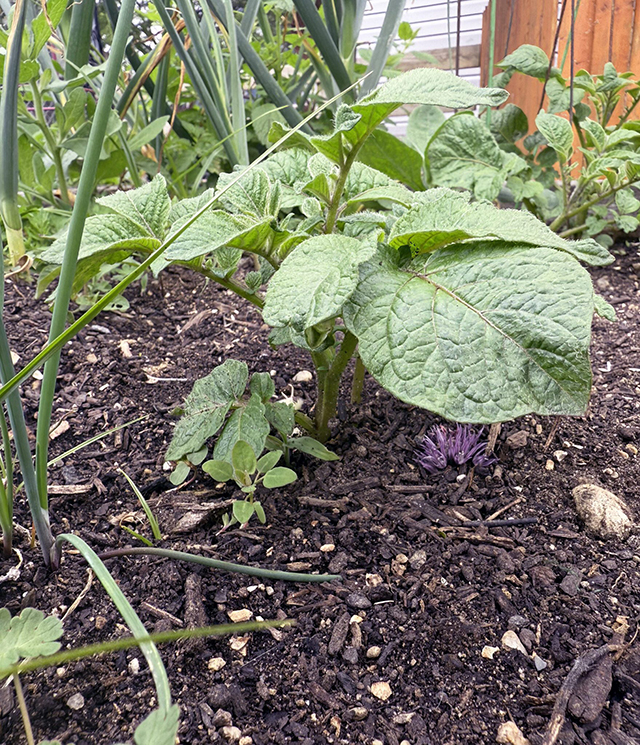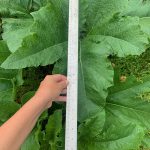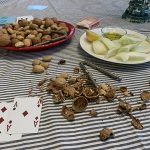Potato Planting Update!
I’m so excited to share that the old potato I had sitting on my kitchen counter—the one that started sprouting—has actually started growing in my garden! Honestly, I didn’t have high hopes for it. I just threw it on the ground for fun. If you remember, I wrote about this a few weeks back: How To Grow A Potato From A Potato.
One month and a week later, the leaves are a vibrant green, sturdy, and healthy. The plant is about 4 inches tall, and at maturity, it can be as tall as 3 feet.
Now that the plant is thriving, I’m feeling the pressure to care for my potato propagation properly. So I did some digging (pun totally intended) and researched how to care for potatoes and what signs to watch for when it’s time to harvest.
I’ve gathered the helpful tips for you, whether you’re a seasoned gardener or just into potatoes.
Soil: The best soil for growing potatoes is a loose and deep loam that holds moisture and also drains well. And lots of organic matter. Luckily, for those without ideal soil, potatoes are famously hardy and adapt to many difficult soil types.
Water: Keep soil consistently moist but not soggy. Water deeply once or twice a week, especially during dry spells. Avoid overhead watering to prevent blight.
Blight: Potato blight is a fungal disease that causes dark patches on leaves and rots tubers, thriving in warm, damp conditions. To reduce the risk, try to keep the foliage dry. Harvest potatoes as soon as the foliage dies back to prevent tuber infection. Since we water bucket by bucket at the Beach 91st Street Community Garden, I’m not too worried about over watering – but it’s good to be aware of the signs, just in case.
Light: Potatoes need full sun, at least 6–8 hours of direct sunlight daily.
Hilling: When plants are about 6–8 inches tall, mound soil or straw around the base, covering the lower leaves. Repeat every few weeks to protect tubers (the potatoes) from sunlight, and this helps boost yield.
I feel hilling will be a little bit of a challenge. This is the process of mounding soil or straw around the base, covering the lower leaves to protect the potatoes and help yield more.
When to Harvest: For new potatoes, harvest 2–3 weeks after flowering. Similar to garlic, for mature potatoes, wait until the foliage turns yellow and dies back— about 120 days after planting.
Years back, I traveled to Peru and the Andes Mountains, where the potato was first domesticated by Indigenous peoples 8,000 years ago. Hearty and adaptable, potatoes have nourished civilizations for centuries. Often underestimated, they’re packed with energy-rich carbohydrates, along with vitamins C and B6, potassium, fiber, and even antioxidants—especially in the cute, colorful varieties.
I haven’t traveled to Idaho yet—the potato capital of the U.S.A.—but it’s definitely high on my list now. Why? During my potato research, I came across the most exciting place: the Idaho Potato Museum. There’s a giant potato with a pad of butter on it – out front (naturally) – and everything you could ever want to know about this amazing vegetable inside. The museum explains why Idaho is so ideal for potato growing and how the humble tuber put Idaho on the map.
Until then, I’ll be tending to my little potato patch on Beach 91st Street and dreaming of Idaho. I’ll keep you posted on the potato progress!
Source: idahopotatomuseum.com, backyardgardenclub.org, wikipedia.org/wiki/Potato
























